You know about the Joros. Here are 4 other invasive species threatening native life in Athens
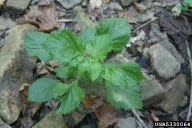
Four invasive plants have emerged in Clarke County that are smothering native plants and habitats.
The Japanese knotweed (Polygonum cuspidatum); Perilla mint (Perilla frutescens); Callery pear a.k.a. Bradford pear (Pyrus calleryana) and Japanese stiltgrass (Microstegium vimineum) are plants that destroy native habitats that Athenians should be concerned about, said Gary Crider, invasive plant control technician at the State Botanical Garden of Georgia.
Crider noticed invasive plants, such as the Japanese knotweed, around 10 years ago in the Clarke County area and has watched its rapid growth over the years.
"They are widely present and rapidly spreading in our area but haven't yet 'emerged' in the public's awareness," Crider said. "They are crowding out and killing our native flora. If left uncontrolled, invasive plants can form a monoculture in which no native plants can survive."
Invasive plants are plant species that are not native to its environment, are introduced by humans, whether intentional or not, and cause economic and/or environmental harm, said Stephanie R. Green, ecological resource coordinator at the Athens-Clarke County Office of Sustainability.
"Invasive plants cause biodiversity loss," Green said. "These plants change movements to wildlife. We lose species. It has cascading effects as far as food chains and what things eat."
The Georgia Exotic Pest Plant Council uses five categories to depict which invasive plants are the most problematic in Georgia. Japanese stiltgrass is rated a Category 1, which means it's a major problem species in Georgia. The Japanese knotweed is a Category 1 alert, which means it's becoming a major problem. Callery pear (Bradford pear) is a Category 3, which means it's a minor problem, hasn't become known as a problem or has been a problem in adjacent states. Perilla mint is not yet on the list, but Green suspects that when the list is updated it will be added as a problem species.
These plant species are lesser known, but very big problem species, Green said.
"Everyone knows Chinese privet," she said. "And they know kudzu. There's these big in your face kind of invasive plants that are kind of part of the lore in the South at this point."
Hickory horned devil: Hickory horned devil might sound like a scary Halloween creature, but it's actually a caterpillar
Yellow-legged hornets: 3 more yellow-legged hornet nests reported in Georgia. Officials working to stop establishment
The problem with invasive plants
The ecosystem relies on native plants and animals to thrive, Crider noted. As part of their ecology, the birds, caterpillars and butterflies feed off of the native plants to reproduce and survive. They have to have each other to survive.
"If you have a bunch of invasive plants, drowning out the native plants, that just wrecks the whole ecosystem," Crider said. "You don't have insects, you don't have caterpillars, then you don't have birds. So, invasive plants do not support the ecosystem — that's why they are harmful by disrupting the ecological processes."
Another issue with invasive plants is that they have a lot of advantages over native plants, he said. For example, birds carry the plants' seeds over to a neighbor's yard that then spreads the plants.
"Invasive plants are unfair competition to the native ecosystem," Crider said. "Invasive plants are smothering. They're smothering baby trees and the plants that pollinators need, and is just destroying nesting habitat for birds."
One way to control the invasive plants is to map out their locations, Crider said.
"We can get the locations, then get the GPS coordinates, then we can find them and take control measures," Crider said.
A closer look at the invasive plants emerging in Clarke County
Japanese Knotweed (Polygonum cuspidatum)
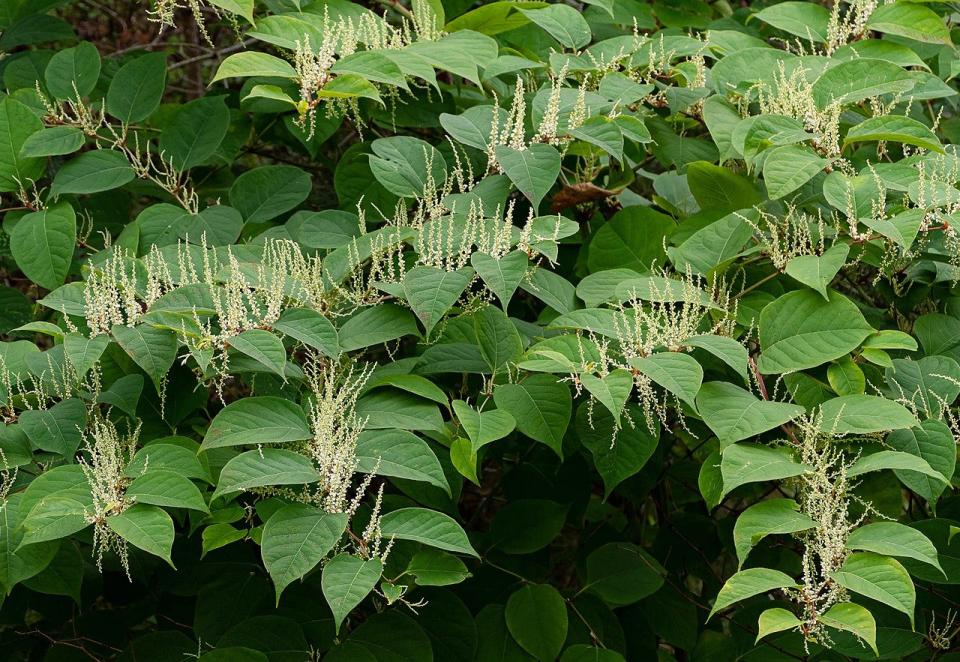
First introduced in the U.S. in the 1800s, Japanese knotweed "commonly invades disturbed areas with high light, such as roadsides and stream banks," according to The Center for Invasive Species and Ecosystem Health at the University of Georgia. The CISEH noted that it's a dense growing shrub reaching heights of 10 feet tall. Crider said that it's very difficult to control because it spreads by rhizomes, much like bamboo.
Japanese knotweed can go under the radar a bit in Clarke County, Green said. However, she said that it thrives on disturbances such as flood events. During a flood, the branches can break off and then grow new plants, she said.
"The Japanese knotweed lends itself well to establishing large and really hard to get rid of colonies," Green said. "It's one of those plants that the community needs to be looking for and needs to be made aware of."
To control the growth of Japanese knotweed, Crider recommends to frequently mow over them or use herbicide. He does not recommend to pull them up because that will make them spread. It is illegal in the U.K. to allow it to spread in the wild, he said.
2. Perilla Mint (Perilla frutescens)
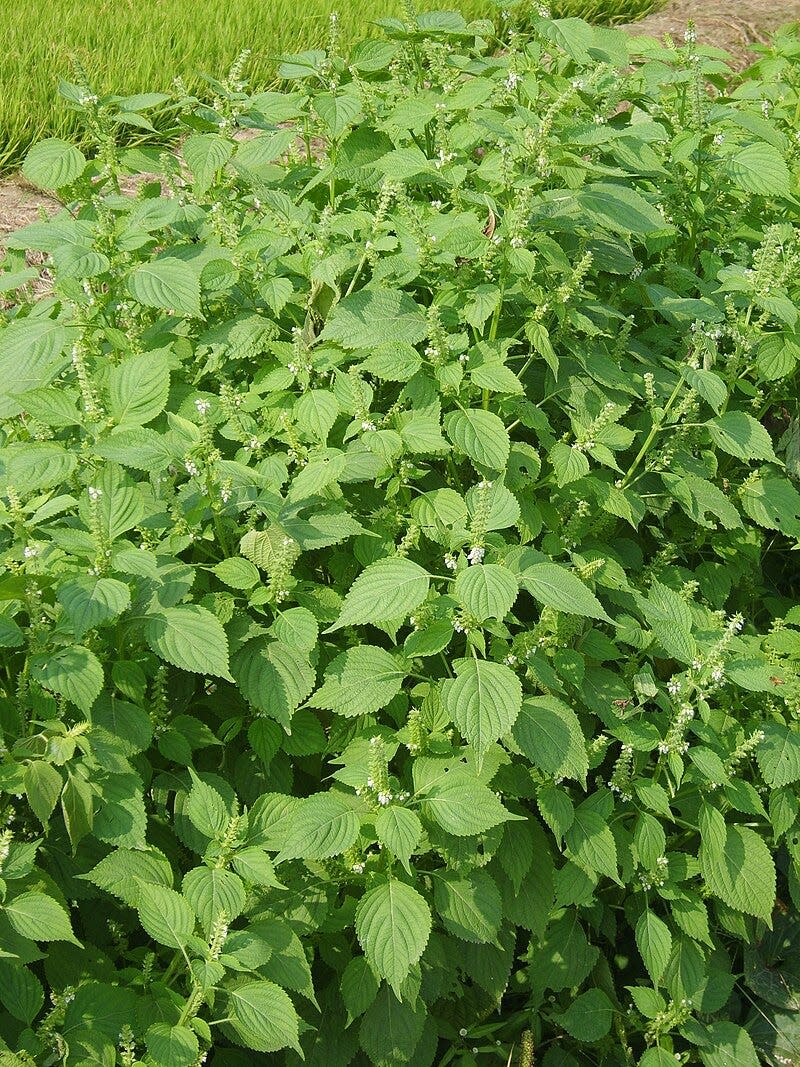
A native to East Asia, Perilla mint grows along roadsides, ditches, forest margins and on hillsides, according to the CISEH. Crider said that it commonly forms dense matts under which nothing else can grow. He also noted that it is deadly to ruminants and horses. It's leading cause of livestock poisoning in Tennessee and other southern states, according to Backyard Ecology's YouTube video. It's also used in cooking or in Chinese medicine, Crider said.
Green said that her team at ACC's Office of Sustainability actively controls Perilla mint because they know how bad it is for the environment and that it spreads very quickly.
"If we have it, we kill it as fast as we can," she said. "It has an immense amount of seed and really likes disturbance, such as flooding and rain events."
Since the Perilla mint is an annual, the best way to remove them is before they flower and sets seed, Crider said. They can be removed by pulling them out by hand or by herbicide, depending on the size of the infestation.
3. Callery Pear a.k.a. Bradford pear (Pyrus calleryana)
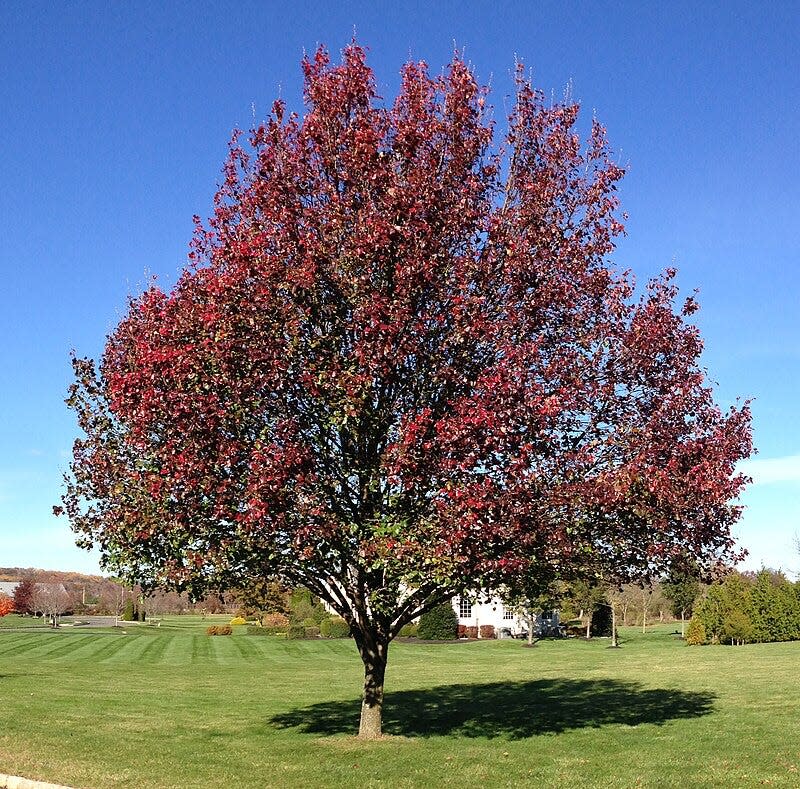
Also known as Bradford pear, the Callery pear tree is recognizable during the fall for its red leaves, Crider said. The invasive plant can grow 60 feet tall and 2 feet wide, according to the CISEH. Crider said that the problem is that the tree will drop pears and will create a dense stand of seedlings, crowding out the competition to the native plants and has long, stiff vicious thorns about 3 to 4 inches long that will flatten tracktor tires. He also said that it spreads rapidly thanks to the fact that the seedling can mature in three years, as opposed to native trees which take about 20 years to produce flowers and fruit.
Green said that the Callery pear tree became popular because of their pretty white flowers in the springtime and the fall.
"They have full color in the fall," she said. "And then the ice storms hit and people realize that they break really easy, they're messy trees and they smell bad."
The control measure is to cut down the tree and spray the stump with herbicide, Crider said, so that it doesn't sprout; it will make six to eight trees off of one stump. It is very costly to remove.
More: The Curse of the Bradford Pear
4. Japanese Stiltgrass (Microstegium vimineum)
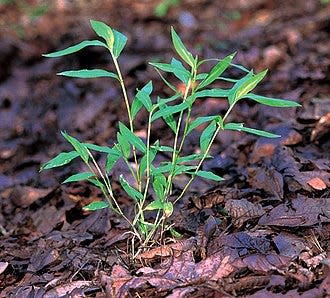
A native to Asia, the Japanese stiltgrass can be found in forested floodplains, ditches, forest edges, fields and trails, according to CISEH, and grows up to 3 feet tall. Crider said that due to it's explosive growth rate, it completely smoothers the ground vegetation, including tree seedlings, within three to five years.
Green said that Japanese stiltgrass can also go under the radar because it look like pretty grass. However, it still negatively impacts its environment.
"It really crowds out native vegetation," she said. "It creates kind of an impenetrable area for small wildlife to move through."
It's an annual so the control measure is to remove them before it forms seeds in late summer, by hand-pulling or mowing, Crider said.
This article originally appeared on Athens Banner-Herald: Bradford pear, other invasive plants emerging in Athens, Clarke County

